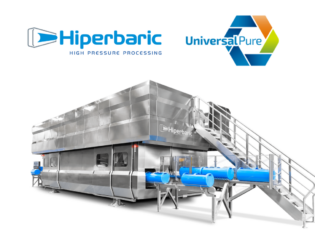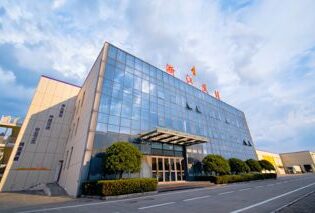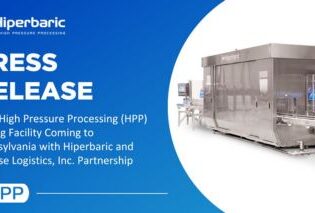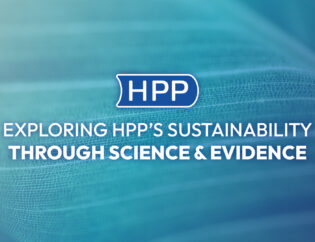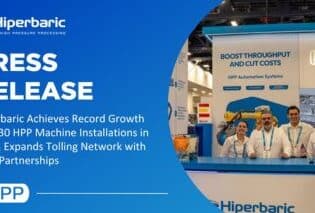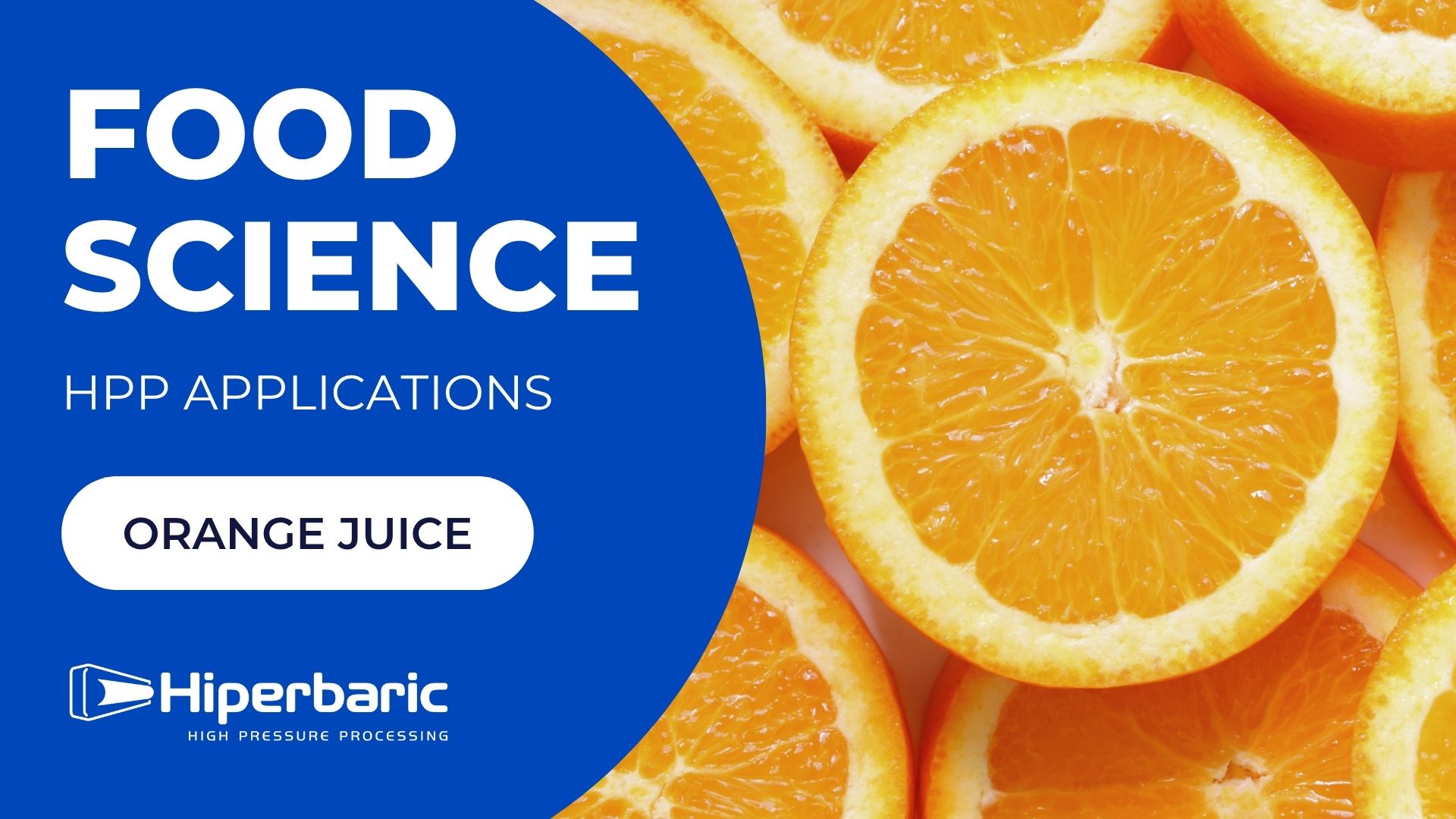
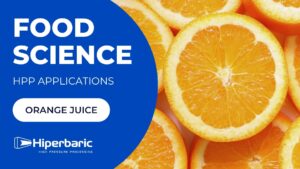
High Pressure Processing (HPP) continues to prove its value as a non-thermal technology for producing safe, high-quality orange juice. A comprehensive 12-week study, “The effect of high pressure processing on the microbial, physical and chemical properties of Valencia and Navel orange juice” by Bull et al. (2004), provides crucial insights into how HPP performs with different orange varieties.
The Science: Key Research Findings
Researchers at Food Science Australia conducted an extensive comparison of high pressure processed, thermally pasteurized, and fresh Valencia and Navel orange juices. The team processed juices at 600 MPa for 60 seconds at 20°C and monitored quality parameters throughout refrigerated storage.
Microbiological Safety and Shelf Life
HPP reduced microbial loads to non-detectable levels immediately after processing and achieved at least a 7-log reduction of Salmonella spp., exceeding the 5-log safety standard for juice. When stored at 4°C, HPP juice remained microbiologically stable for 12 weeks, with counts remaining below detection limits for the first 4 weeks and remaining below 2 log cfu/ml throughout the study.
Navel juice (pH 3.7) showed superior microbiological stability compared to Valencia juice (pH 4.3), demonstrating that lower pH enhances HPP effectiveness in microbial inactivation.
The Critical pH Factor
One of the study’s most significant findings involved pectin methyl esterase (PME), the enzyme responsible for cloud loss. PME residual activity reduction by HPP proved highly pH-dependent: at pH 3.6 or lower, HPP successfully reduced PME activity within 2-5 minutes at 600 MPa. However, as pH increased above 4.0, PME remained active even after 15 minutes of treatment.
The researchers tracked oranges throughout the harvest season and discovered that natural pH increases from 3.6 in early-season fruit to 4.1 at season’s end, directly impacting processing requirements.
Quality and Nutrition Preservation
L-ascorbic acid (vitamin C) remained above levels needed to provide 100% of the recommended daily intake in a standard serving for at least 8-12 weeks. Beta-carotene stayed stable throughout storage. Physical and chemical properties, including °Brix, viscosity, titratable acidity, and color, showed no significant differences between HPP and fresh juice.
The study concluded that HPP orange juice was “comparable to fresh juice in nutrient content and all other quality indicators, but with significantly better microbiological stability and extended refrigerated shelf life.”

Best Practices: Hiperbaric Recommendations
Based on this scientific foundation and our commercial experience, Hiperbaric recommends the following systematic approach to HPP orange juice production:
Raw Materials Selection
Choose the Right Varieties
- Recommended: Valencia Late, Hamlin, Midnight, Barberina, Powell
- Avoid: Navel oranges (high limonin content creates bitterness)
Optimize Harvest Timing
- Work with suppliers to harvest when limonin concentration is lowest
- Consider seasonal pH variation. Early-season fruit typically has a lower pH, which enhances both microbial inactivation and PME control
Use Only Fresh Juice
- Process only freshly squeezed juice
- Avoid freezing or heat treating before HPP
Juice Extraction and Bottling
Use Gentle Extraction Methods
- Minimize mesocarp tissue (white pith) in extracted juice
- Mesocarp is rich in limonin; HPP can extract it from tissue fragments, increasing bitterness
Monitor Limonin Levels
- Target: < 3 ppm in final juice
- Juices with > 6 ppm have no commercial interest
Select Appropriate Packaging
- Use PET bottles with low absorption (scalping) rates
- Mylar® PET is a common polymer for orange juice
- Good barrier properties help preserve vitamin C during storage
High-Pressure Processing Parameters
Control Pre-Processing Quality
- Maintain total aerobic counts < 10⁴ cfu/ml before HPP
- High initial quality allows for milder processing conditions
- Lower starting microbial load significantly extends shelf life
Optimize Temperature Management
- Keep juice temperature < 6°C from extraction through HPP
- Cold juice minimizes adiabatic heating during pressurization
- Lower temperatures minimize oxidation and preserve ascorbic acid
Apply HPP Immediately After Extraction
- Process juice as soon as possible after extraction
- In-pack processing reduces post-processing contamination risk
Validate Appropriate Pressure Conditions
- Avoid processing at 6,000 bar
- Validate the mildest HPP conditions that achieve the desired shelf life
- Research validates 4,000-6,000 bar (400-600 MPa) with short hold times (60 seconds) as effective
Consider pH Impact
- Understand your juice pH and how it varies seasonally
- Lower pH enhances both microbial inactivation and enzyme control
- In markets where consumers accept natural separation, PME inactivation may not be critical
The Bottom Line
The Bull et al. research provides robust validation that HPP delivers 12-week microbiological stability at refrigerated temperatures, exceeds pathogen-reduction safety requirements, and preserves fresh-like nutritional and sensory qualities, all under commercially feasible processing conditions.
Success in HPP orange juice production requires a complete systems approach: strategic variety selection, awareness of harvest timing, gentle extraction, pre-processing quality control, immediate cold processing at validated parameters, and appropriate packaging. When these elements align, the result is premium orange juice that delivers fresh characteristics with extended shelf life.
Reference:
Bull, M.K., Zerdin, K., Howe, E., Goicoechea, D., Paramanandhan, P., Stockman, R., Sellahewa, J., Szabo, E.A., Johnson, R.L., & Stewart, C.M. (2004). The effect of high-pressure processing on the microbial, physical, and chemical properties of Valencia and Navel orange juice. Innovative Food Science and Emerging Technologies, 5, 135–149.


